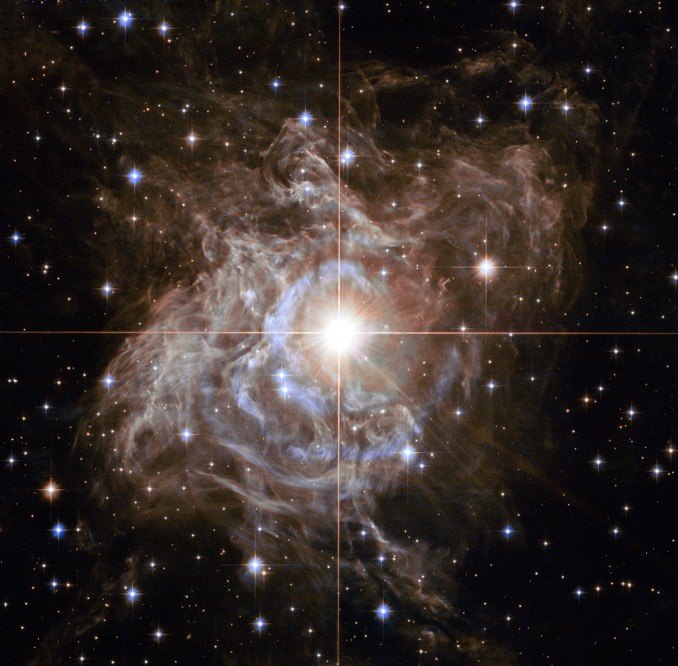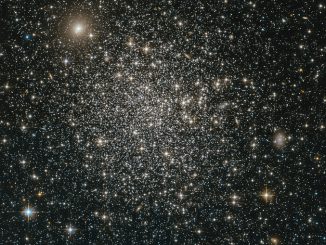In a holiday image courtesy of the Hubble Space Telescope, the Cepheid variable star RS Puppis, 10 times more massive than the sun and 200 times larger, shines in a wreath-like “gossamer cocoon” of dust, brightening and dimming over a 41.5-day cycle. RS Puppis has an average intrinsic brightness 15,000 times greater than the Sun’s and is one of the most luminous Cepheids in the Milky Way. As it pulsates, the surrounding nebula flashes in wave like “light echoes. By measuring those fluctuations and the faint light echoes moving across the nebula, astronomers have been able to establish the distance to RS Puppis with high precision. The European Southern Observatory’s New Technology Telescope found that distance to be about 6,500 light years in 2008. Follow-on studies by Hubble in 2014 came up with a slightly lower value. The European Space Agency’s Gaia spacecraft was able to directly measure the distance to RS Puppis using geometric parallax, coming up with a value of 5,580 (plus or minus 260) light years.




